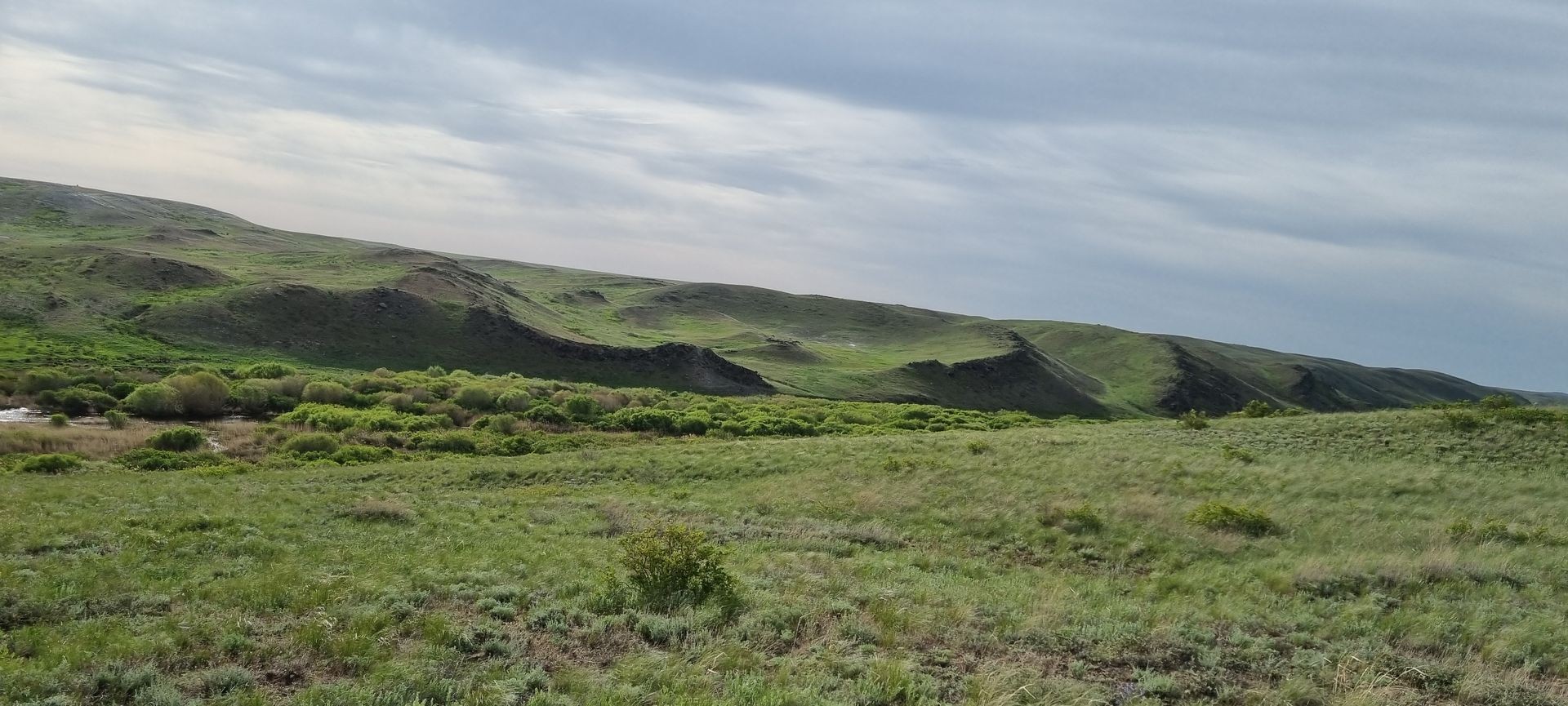Geology
The Neoproterozoic picrite-rhyolite complex along the Kara-Turgai River forms a circular structure. It contains picrite sills rich in copper, nickel, iron, and platinum group minerals (PGMs), while lead-zinc mineralization is found in nearby acid rocks.
The picrite and rhyolite sills have distinct cone shapes, sloping toward a central point where feeder conduits likely supplied magma of different compositions.
These cone-shaped magma bodies were likely formed by multiple volcanic events, gradually cooling and solidifying over time to create the picrite and rhyolite formations.
The presence of valuable minerals like copper, nickel, iron, and PGMs in the picrites makes them economically significant. Discovering feeder channels also provides crucial information about how the ore-bearing rocks formed.
Favorable host rock
The Neoproterozoic ultramafic rocks of the Karaturgai complex, with a magnesium oxide (MgO) content ranging from 25–28 wt%, belong to the meimechite-picrite family. Despite the lack of spinifex structures typical of komatiites, they have their own distinct characteristics.
Disseminated sulfides found in the rocks indicate a high concentration, suggesting saturation of the host rock with sulfides.
Around 816±5 million years ago, during the Neoproterozoic era, bimodal picrite-rhyolite magmatism marked the beginning of continental rifting within the Rodinia supercontinent.
The formation of the significant Jinchuan Cu-Ni-PGE deposit is linked to this Neoproterozoic rifting magmatism. Analysis of nickel (Ni), copper (Cu), ruthenium (Ru), rhodium (Rh), platinum (Pt), and palladium (Pd) contents and their ratios in the picrite ores of the Karaturgai complex suggests they are similar to the Jinchuan plutonic deposit in South China.
High tenor sulphides
Previous studies conducted during the Soviet era on a large scale have shown that sulphide assemblages consist of 45-55% pyrrhotite, 25-30% pentlandite, and 20-25% chalcopyrite. However, a recent study carried out at Cardiff University has shed new light on the matter. The study has verified that the average content of pentlandite, chalcopyrite, and pyrrhotite contains 33% nickel, 30% copper, 10,000 g/t of cobalt, 15-35 g/t of palladium, rhodium 1-2 g/t, and platinum 0.5-2 g/t. This means that the sulphide tenor is approximately 9.9% Ni, 8% Cu, 0.3% Co, and 9 g/t Pd.
In comparison to the metal content of the sulphides from the Cape Smith Belt, the Karaturgai site boasts significantly higher concentrations of nickel, copper, and palladium (Cape Smith's sulphides metal content ranges from 5-15% of Ni, 1-4% Cu, and 3-7 g/t Pt+Pd).
The elevated concentrations of valuable metals indicate that the Karaturgai site has immense potential for further exploration and development
Our company is focused on identifying massive sulphide deposits at the depth of intrusion with a tonnage of around 100 mln tonnes at 1.5-2% of Ni and 0.8-1% of Cu.
In addition to exploring sulphide traps, we are also targeting disseminated sulphides in the host rock, which have the potential resources of approximately 400 million tonnes at 0.6-0.8% Ni, 0.2-0.5% Cu, 0.15-0.2 Co, and 1.5-2 g/t Pd.

